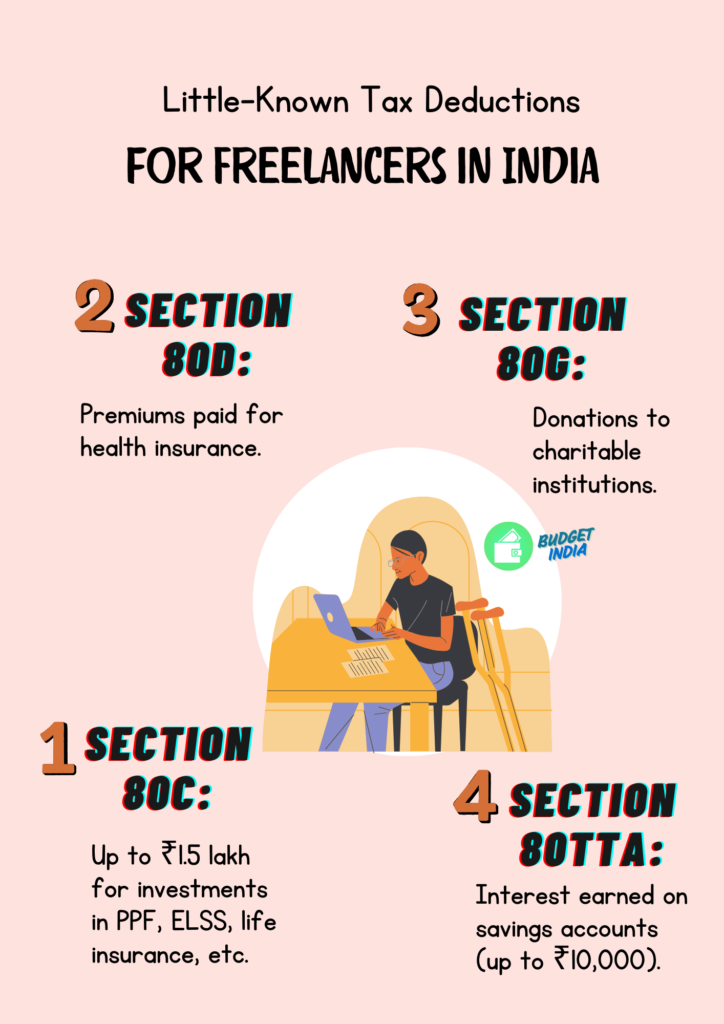Freelancing in India is on the rise, offering flexibility and independence to professionals across industries. However, with great freedom comes great responsibility—especially when it comes to taxes. Filing Income Tax Returns (ITR) as a freelancer can seem daunting, but it doesn’t have to be. Whether you’re a freelance writer, designer, developer, or consultant, this step-by-step guide will help you navigate the process with ease.
Let’s break down everything you need to know about filing ITR as a freelancer in India, from understanding your tax obligations to submitting your return online.
Who is Considered a Freelancer?
A freelancer is an individual who provides services to clients on a project basis without being employed by a single company. Freelancers are classified as self-employed professionals under the Income Tax Act, and their income is categorized as “Income from Business or Profession.”
Why Should Freelancers File ITR?
- Legal Requirement: If your annual income exceeds the basic exemption limit (₹2.5 lakh for individuals below 60 years), filing ITR is mandatory.
- Financial Credibility: ITR receipts are often required for loans, visas, or other financial transactions.
- Avoid Penalties: Non-filing or late filing can attract penalties and interest.
- Claim Refunds: If you’ve paid excess tax, filing ITR helps you claim a refund.
Step-by-Step Guide to Filing ITR for Freelancers
Step 1: Determine Your Income
As a freelancer, your income includes all payments received from clients, both in India and abroad. Make sure to:
- Keep track of all invoices and payments.
- Convert foreign income to INR using the RBI’s exchange rate on the transaction date.
Step 2: Calculate Your Gross Income
Your gross income includes:
- Professional Fees: Payments received for your services.
- Other Income: Interest from savings accounts, fixed deposits, or rental income.
Step 3: Claim Deductions Under Section 44ADA (Presumptive Taxation)
Freelancers can opt for the Presumptive Taxation Scheme under Section 44ADA if their annual turnover is less than ₹75 lakh. Here’s how it works:
- Only 50% of your gross receipts are considered taxable income.
- No need to maintain detailed books of accounts.
- Example: If your gross income is ₹10 lakh, only ₹5 lakh will be taxed.
If you don’t opt for presumptive taxation, you’ll need to maintain books of accounts and claim actual expenses.
Step 4: Deduct Expenses
If you’re not using the presumptive taxation scheme, you can deduct the following expenses:
- Office Rent: If you work from a rented space.
- Internet and Phone Bills: Used for work purposes.
- Software and Tools: Subscriptions or licenses for tools like Adobe, Canva, or Trello.
- Travel Expenses: Client meetings or work-related travel.
- Professional Fees: Payments to lawyers, CAs, or consultants.
Step 5: Choose the Right ITR Form
Freelancers typically use:
- ITR-3: For income from business or profession.
- ITR-4 (Sugam): If you opt for presumptive taxation under Section 44ADA.
Step 6: Gather Required Documents
Before filing your ITR, ensure you have the following:
- PAN Card: Mandatory for filing ITR.
- Bank Statements: To verify income and expenses.
- Form 16A/16B: If TDS has been deducted by clients.
- Invoices and Receipts: Proof of income and expenses.
- Investment Proofs: For deductions under Section 80C, 80D, etc.
Step 7: File Your ITR Online
- Register on the Income Tax e-Filing Portal: Visit incometax.gov.in and create an account.
- Select the Correct ITR Form: Choose ITR-3 or ITR-4 based on your income source.
- Fill in the Details: Enter your income, deductions, and tax payable.
- Verify Your Return: Use Aadhaar OTP, EVC, or send a signed physical copy of ITR-V to the CPC Bengaluru.
- Submit Your ITR: Once verified, your ITR is successfully filed.
Key Tax Deductions for Freelancers

- Section 80C: Up to ₹1.5 lakh for investments in PPF, ELSS, life insurance, etc.
- Section 80D: Premiums paid for health insurance.
- Section 80G: Donations to charitable institutions.
- Section 80TTA: Interest earned on savings accounts (up to ₹10,000).
Common Mistakes to Avoid
- Not Reporting All Income: Ensure you report income from all clients, including foreign clients.
- Ignoring TDS: If TDS has been deducted, claim it while filing ITR.
- Missing Deadlines: The due date for filing ITR is usually July 31 (unless extended).
- Incorrect ITR Form: Using the wrong form can lead to rejection or notices from the IT department.
FAQs About Filing ITR for Freelancers
1. Do freelancers need to pay advance tax?
Yes, if your tax liability exceeds ₹10,000 in a financial year, you must pay advance tax in installments (June 15, September 15, December 15, and March 15).
2. Can freelancers claim GST input credit?
Yes, if you’re registered under GST, you can claim input tax credit on business expenses.
3. What happens if I miss the ITR filing deadline?
Late filing can attract a penalty of up to ₹10,000 under Section 234F.
4. Can I revise my ITR if I make a mistake?
Yes, you can revise your ITR within the assessment year or before the end of the relevant financial year.
Final Thoughts
Filing ITR as a freelancer may seem overwhelming at first, but with proper planning and organization, it becomes a straightforward process. By understanding your income, claiming the right deductions, and filing your return on time, you can stay compliant with tax laws and avoid unnecessary penalties.
Remember, filing ITR is not just a legal obligation—it’s a step toward financial discipline and credibility. So, take charge of your finances, and make tax filing a hassle-free part of your freelancing journey.






Leave a Reply